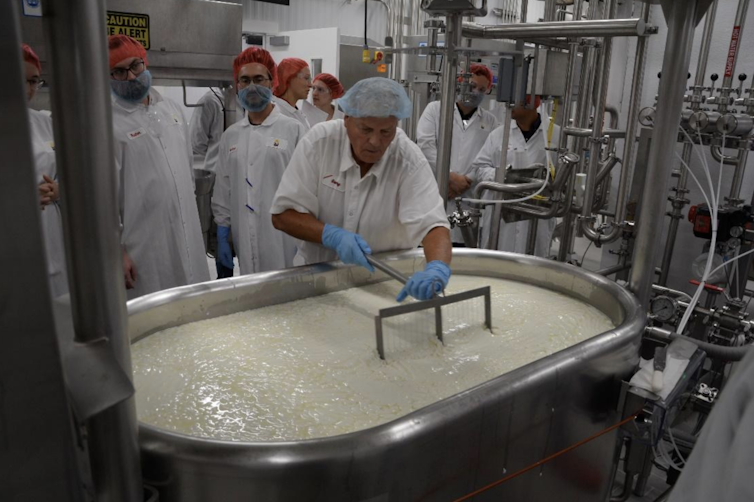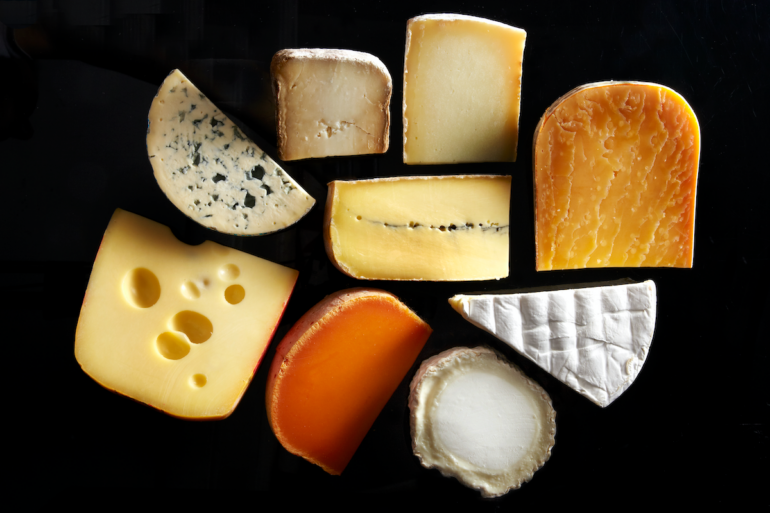Cheese is a relatively simple food. It’s made with milk, enzymes – these are proteins that can chop up other proteins – bacterial cultures and salt. Lots of complex chemistry goes into the cheesemaking process, which can determine whether the cheese turns out soft and gooey like mozzarella or hard and fragrant like Parmesan.
In fact, humans have been making cheese for about 10,000 years. Roman soldiers were given cheese as part of their rations. It is a nutritious food that provides protein, calcium and other minerals. Its long shelf life allows it to be transported, traded and shipped long distances.
I am a food scientist at the University of Wisconsin who has studied cheese chemistry for the past 35 years.
In the U.S., cheese is predominantly made with cow’s milk. But you can also find cheese made with milk from other animals like sheep, goats and even water buffalo and yak.
Unlike with yogurt, another fermented dairy product, cheesemakers remove whey – which is water – to make cheese. Milk is about 90% water, whereas a cheese like cheddar is less than about 38% water.
Removing water from milk to make cheese results in a harder, firmer product with a longer shelf life, since milk is very perishable and spoils quickly. Before the invention of refrigeration, milk would quickly sour. Making cheese was a way to preserve the nutrients in milk so you could eat it weeks or months in the future.
How is cheese made?
All cheesemakers first pump milk into a cheese vat and add a special enzyme called rennet. This enzyme destabilizes the proteins in the milk – the proteins then aggregate together and make a gel. The cheesemaker is essentially turning milk from a liquid into a gel.
After anywhere from 10 minutes to an hour, depending on the type of cheese, the cheesemaker cuts this gel, typically into cubes. Cutting the gel helps some of the whey, or water, separate from the cheese curd, which is made of aggregated milk and looks like a yogurt gel. Cutting the gel into cubes lets some water escape from the newly cut surfaces through small pores, or openings, in the gel.
The cheesemaker’s goal is to remove as much whey and moisture from the curd as they need to for their specific recipe. To do so, the cheesemaker might stir or heat up the curd, which helps release whey and moisture. Depending on the type of cheese made, the cheesemaker will drain the whey and water from the vat, leaving behind the cheese curds.

Wisconsin Master Cheesemaker Gary Grossen cuts a vat of cheese with a cheese harp during a cheesemaking short course at the Center for Dairy Research in Madison, Wis. Cutting helps release whey during the cheesemaking process.
UW Center for Dairy Research
For a harder cheese like cheddar, the cheesemaker adds salt directly to the curds while they’re still in the vat. Salting the curds expels more whey and moisture. The cheesemaker then packs the curds together in forms or…



